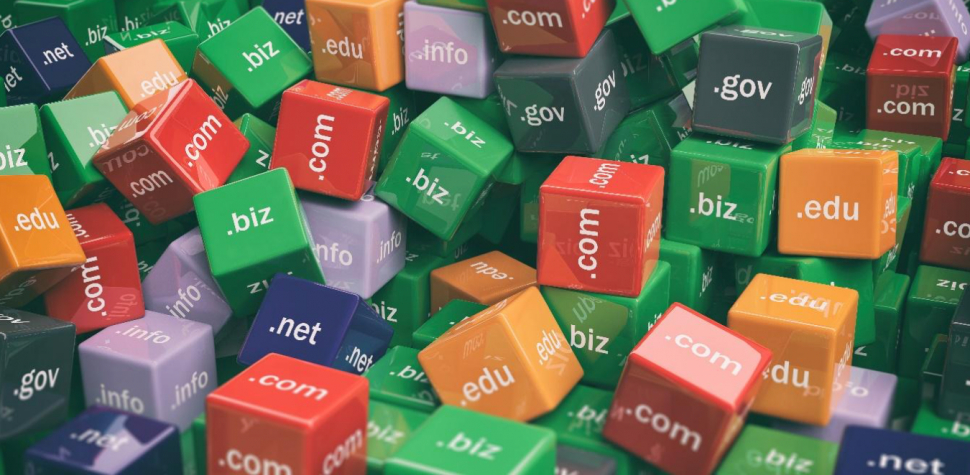
For nearly 40 years, the Domain Name System (DNS) has served as the definitive naming system for the internet. Functioning like a global phone book, DNS translates numeric-based addresses, called Internet Protocol (IP) addresses, that computers use to navigate the internet into a unique, human-readable text string called a domain name. From its humble beginnings in 1985 with the first domain registered – symbolics.com – DNS has grown into a global, multilingual and multinational phenomenon, with 359.3 million domains currently registered.
DNS has transformed our culture and the way we speak and think about websites, email addresses, and domain extensions like dot com. Domains have also become an essential part of establishing the digital identities of entrepreneurs, companies, and famous brands worldwide.
Behind the scenes, DNS quietly keeps the internet functioning across a multitude of platforms, including computers, mobile phones, tablets, cars and the expanding universe of smart devices comprising the Internet of Things (IoT). No matter what the device or its purpose, it benefits from the universal accessibility and uniqueness of DNS to stay connected.
More recently, we’ve seen the emergence of blockchain technology - a secure and decentralized ledger system that consists of linked records, each containing a list of transactions. Blockchain records are distributed across a network of computers, providing transparency, transaction integrity and resistance to tampering. The most familiar application for blockchain technology is to support cryptocurrency transactions, with the coins or tokens residing in users’ crypto wallets. These wallets have unique addresses, and just like the device IP addresses mentioned previously, they are not human-readable or easily remembered. Startups like Ethereum Name Services (ENS) and Unstoppable Domains have launched their own naming systems to issue blockchain identifiers (sometimes inaccurately called “blockchain domains”) as a means to link user-friendly strings to a unique wallet address.
The advantages of blockchain identifiers include decentralization, censorship resistance, no renewal fees, and they do not expire. However, every update requires paying gas fees, which are small charges for processing transactions, and applying blockchain identifiers to other services currently supported by DNS, like web and email resources, is proving to be more challenging.
Blockchain identifiers have many issues
Early adopters of blockchain identifiers are discovering important limitations. Both the registering party and the end user need to employ custom network settings, or download special browsers or plug-ins, all of which impedes wider adoption. Additionally, blockchain identifiers introduce challenges with “name collisions“. This occurs when the same domain name exists in two systems at the same time, which can create security risks and navigation conflicts when someone attempts to use a domain. Blockchain identifiers can “collide” with identical domains in DNS, or even with other blockchains. A study on the collision of .cba domains sheds light on the challenges associated with collisions.
Along with name collisions and being difficult to use, blockchain identifiers are hampered by reduced trust and user confidence. Because of its scale and ubiquity, DNS is trusted and recognized by billions of users every day. One reason for this trust is because it addresses challenges with domains such as DNS abuse. To combat abuse and maintain user trust, DNS regulators have adopted formal dispute procedures like the Uniform Domain-Name Dispute-Resolution Policy (UDRP) and domain name registrars are subject to established laws such as the Anti-cybersquatting Consumer Protection Act (ACPA) to tackle infringement and counterfeit sites.
In contrast, blockchain identifiers lack centralized oversight or tools to effectively address abuse, infringement, or criminal activities associated with their name services. There are no reliable dispute mechanisms, and no one can “take down” an abusive blockchain identifier. If this sounds like the ‘Wild West,’ that’s because it is. The perceived advantage of not having policies and regulations could also be blockchain’s demise in situations where the need for protection against malicious activities becomes critical.
So, are these blockchain-based identifiers an improvement over DNS? To determine if they are suitable, it's essential to first understand what problems they seek to address. Implementation of technology shouldn’t merely be for the sake that it exists, but instead, should be implemented to solve a problem.
Many proponents of blockchain technology assert that it eliminates the need for entities like ICANN and registrars, offering a management-free environment. They also assert that blockchain addresses the issue of renewal fees, providing a system free from expirations or deletions. However, while these advantages may be compelling for some, they are often outweighed by their technical limitations, eroded user confidence or potential conflicts from name collisions.
As a result, instead of replacing DNS, blockchain technology and crypto wallets can be supported by DNS. For instance, internet users can register .eth domain names with ENS, while .art DNS domains provide a platform to integrate crypto technology. Domain registries and registrars can support blockchain technology to bridge a gap that allows for a secure, integrated internet.
At this time, blockchain identifiers fall short of domain names due to their limited functionality, complex user requirements and structural vulnerability. But, like any emerging technology, they are evolving, and these shortcomings may be effectively addressed in the future. Rather than replacing the DNS, it’s more likely that blockchain evolution will spur new use cases for DNS to bridge the two systems. With GoDaddy domains supporting ENS wallets, we are beginning to see that potential.
This article was produced as part of TechRadarPro's Expert Insights channel where we feature the best and brightest minds in the technology industry today. The views expressed here are those of the author and are not necessarily those of TechRadarPro or Future plc. If you are interested in contributing find out more here: https://www.techradar.com/news/submit-your-story-to-techradar-pro







